1) Buzzer blocks
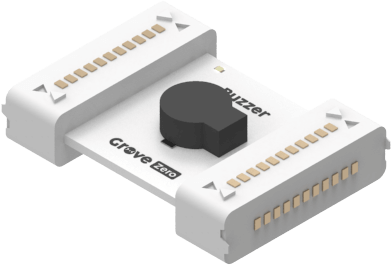
1.1)
This block controls the buzzer to play the built-in melody.
There are 8 built-in melodies.
Example 1: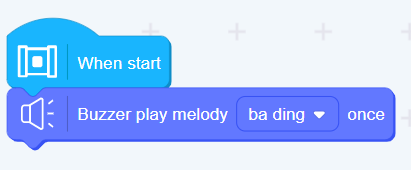
When start, the buzzer will then play the melody “ba ding” once.
1.2)
This block controls the buzzer to play various tones.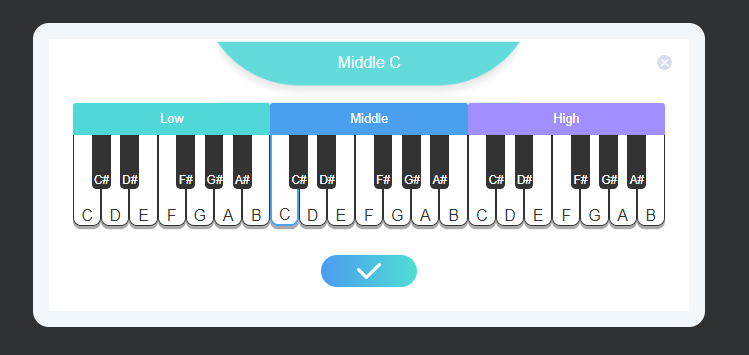
You can select various tones here.
Example 2: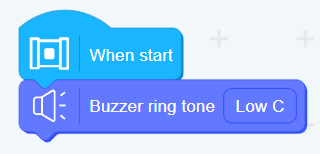
When start, the buzzer begins to play the tone “low C”.
1.3)
Beat limitation is added compared to the last block.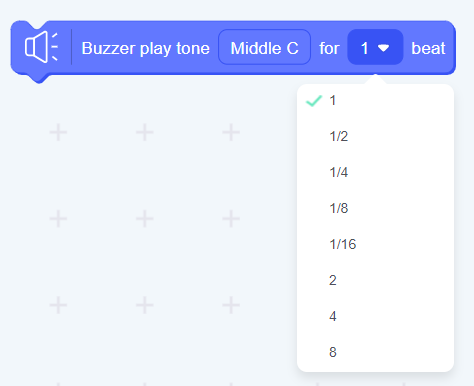
There are 8 beats for you to select.
Example 3:
When start, the buzzer will play the tone “low C” for 1 beat.
1.4)
This block controls the buzzer to rest for 1 second.
Example 4: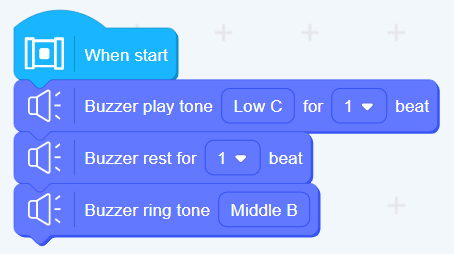
When start, the buzzer will play the tone “low C” for a beat and then rest for a beat, then rings tone “middle B”.
1.5)
This block controls the buzzer to stop.
Example 5:
When start, the buzzer will play the tone “middle D” for 1 second, then will stop.
1.6)
This block controls the buzzer tempo bpm. The input numerical value is n, where 60≤n≤960. If the input number is beyond the number range, then it will automatically turn to be a number within the range.
Example 6: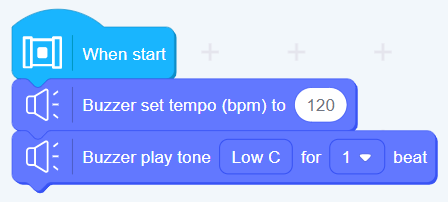
When start, the buzzer will play the tone “low C” with the bpm of 120, meaning the tone will last for 0.5 seconds.
1.7)
Example 7: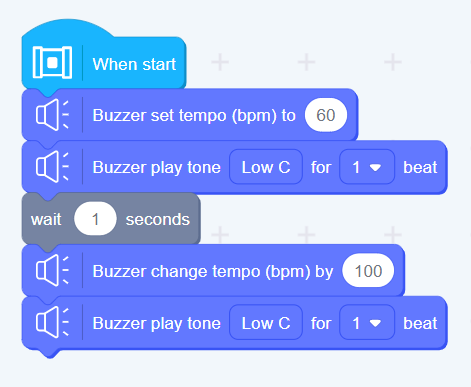
When start, the buzzer will play the tone “low C” with the bpm of 60 for 1 second. Then it will play the tone “low C” with the bpm of 160.
1.8)
This block is a numeric programming block, can be used to read the bpm of the current buzzer.
Example 8: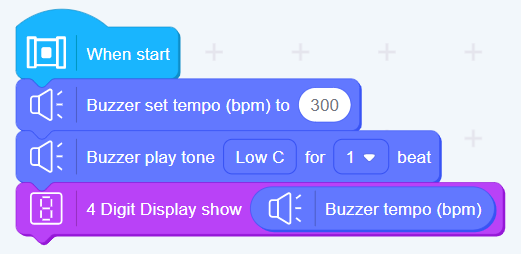
When start, the buzzer will play the tone according to the command and the digit display will show the current bpm of 300.
2) MP3 blocks
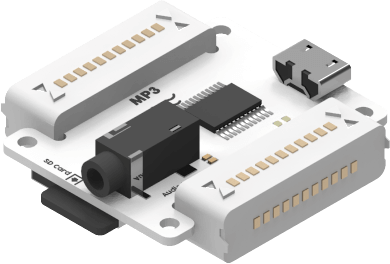
2.1)
This block controls the player to play the soundtrack in the storage card. The input value should be a nonnegtive integer. Once other numbers are input, then it will automatically turn it to be “0” as the input number.
Example 9: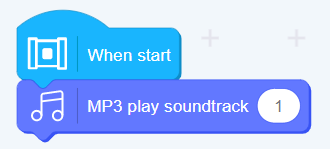
When start, the player will play the first soundtrack according to the order of files in the storage card.
2.2)
This block controls the player to pause or resume the sound.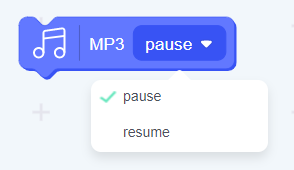
Example 10: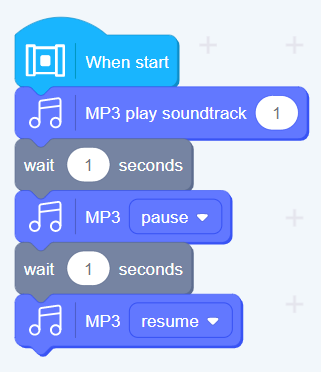
When start, the player will play the first soundtrack for 1 second, then pause for a second and then resume.
2.3)
This block controls the player to play the next soundtrack.
Example 11: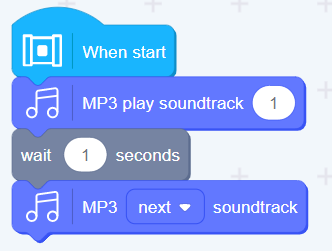
When start, the player will play the first soundtrack for 2 seconds and then play the next one.
2.4)
There are many play modes for you to select.
normal, shuffle, repeat.
Example 12: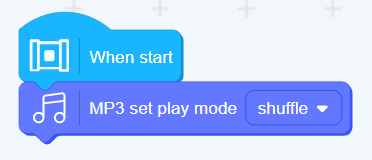
When start, the player will begin to play the sound in a random order.
2.5)
This block controls the player to stop playing.
Example 13: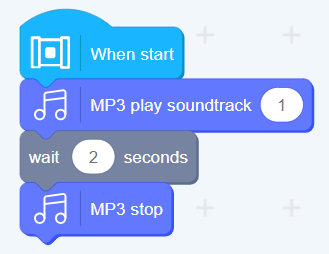
When start, the player will play the first soundtrack for a second and then stop playing.
2.6)
This block controls the volumn. The input number is an integer “n”. If other characters are input in the blank, then it will automatically set the value to “0” or select the figure that is accurate to the decimal places.
Example 14:
When start, the player will play the first soundtrack for 2 seconds and then change the volumn by -10%.
2.7)
This block controls the volumn of the player and its default value is 100%.
The volumn is n and 0≤n≤100. If the input number is beyond the number range, then it will automatically turn to be a number within the range.
Example 15: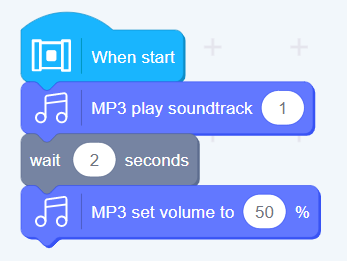
When start, the player will play the first soundtrack for 1 second and the volumn will reduce to its 50%.

